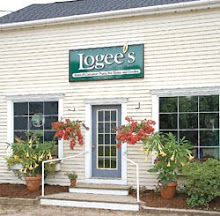

The Chenille Plant has been well-loved at Logee’s for many years. Whenever, you visit Logee’s you will almost always see the everblooming Chenille plants lining the benches, showing off their dazzling, fuzzy bloom.
Today, when I walked through the greenhouses the long drooping catkins (flowers) of the chenille plant seemed brighter and more cheery than usual. June sunshine is much brighter and intense than even the March sunshine just several months ago. So of course, this would make sense because the chenille plant loves bright sunny light, which brings out the richness of color in its blooms.
Another, observation I had was Chenille plant’s versatility. All in the same space I noticed the two different varieties that we grow and their subtle differences in shape and culture.

Acalypha hispida "Chenille Plant" also known as “Red Hot Cattails” makes an eye-catching standard, where the central stem is trimmed clean of all leaves and flowers and left with a full crown on top.
Acalypha hispida can also be grown in a hanging basket as seen here.

Or trained to have a central stem with flowers and leaves cascading off the stem for the entire height as shown here.
Another notable difference is the length of the catkins. The length of the fuzzy catkins is longer than our other variety and resembles a show girls’ boa, hence its other common name “Red Hot Cattails.”

The other variety we grow called Acalypha pendula "Strawberry Firetails” has plumper and shorter fuzzy red catkins. And, like its name implies, the flowers pedulate and are shown off when grown as a hanging basket.

Acalypha pendula flowers like crazy at a young age as seen here growing in two and a half inch pots.
Care for both varieties are simple. Full sun, lots of water and fertilizer, especially in the active growing season. They can be grown outside year-round in Zone 10 or higher or simply bring outside seasonally if in the north. Read our cultural care sheet for more details on the easy care of these plants.







































